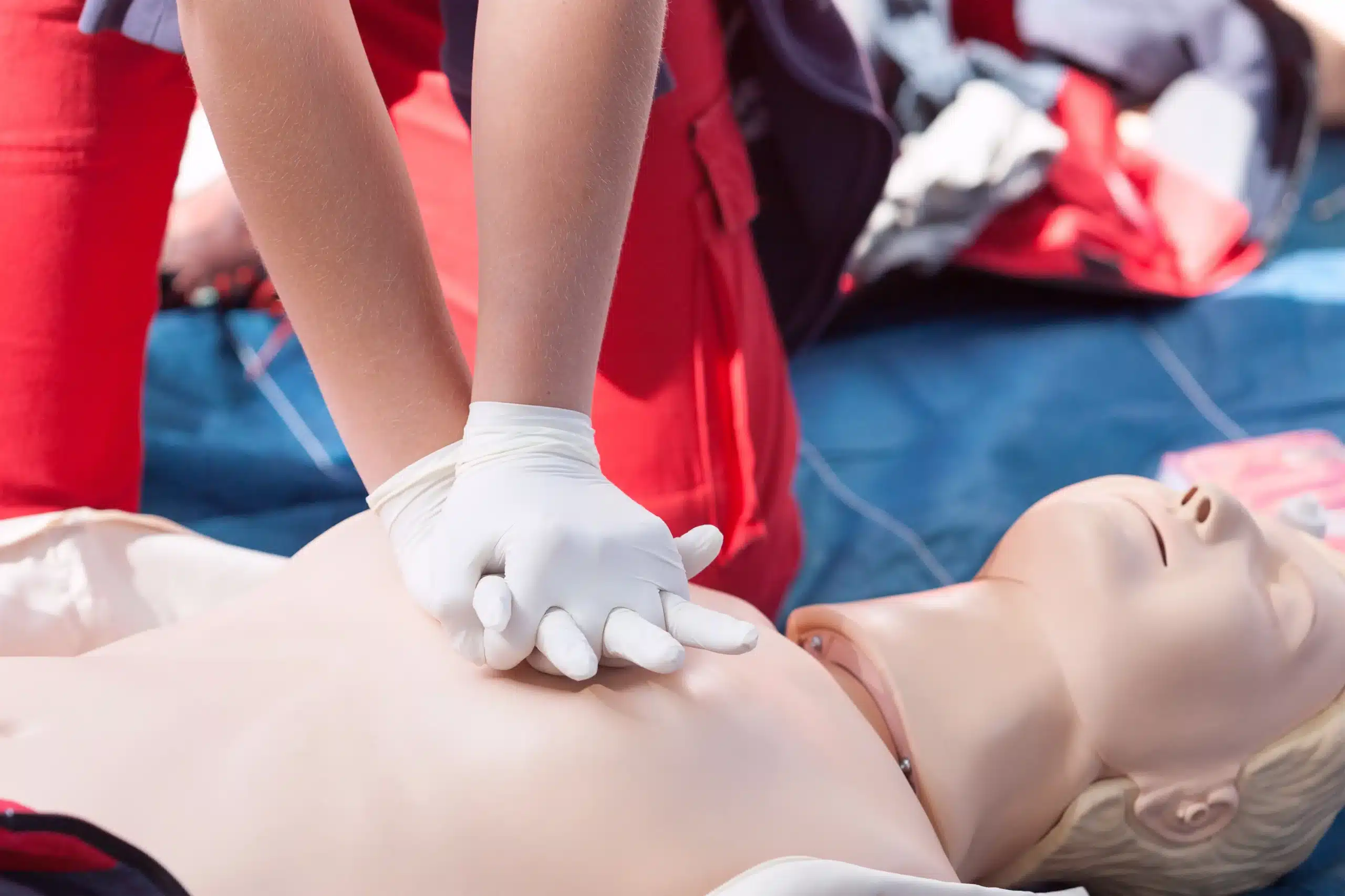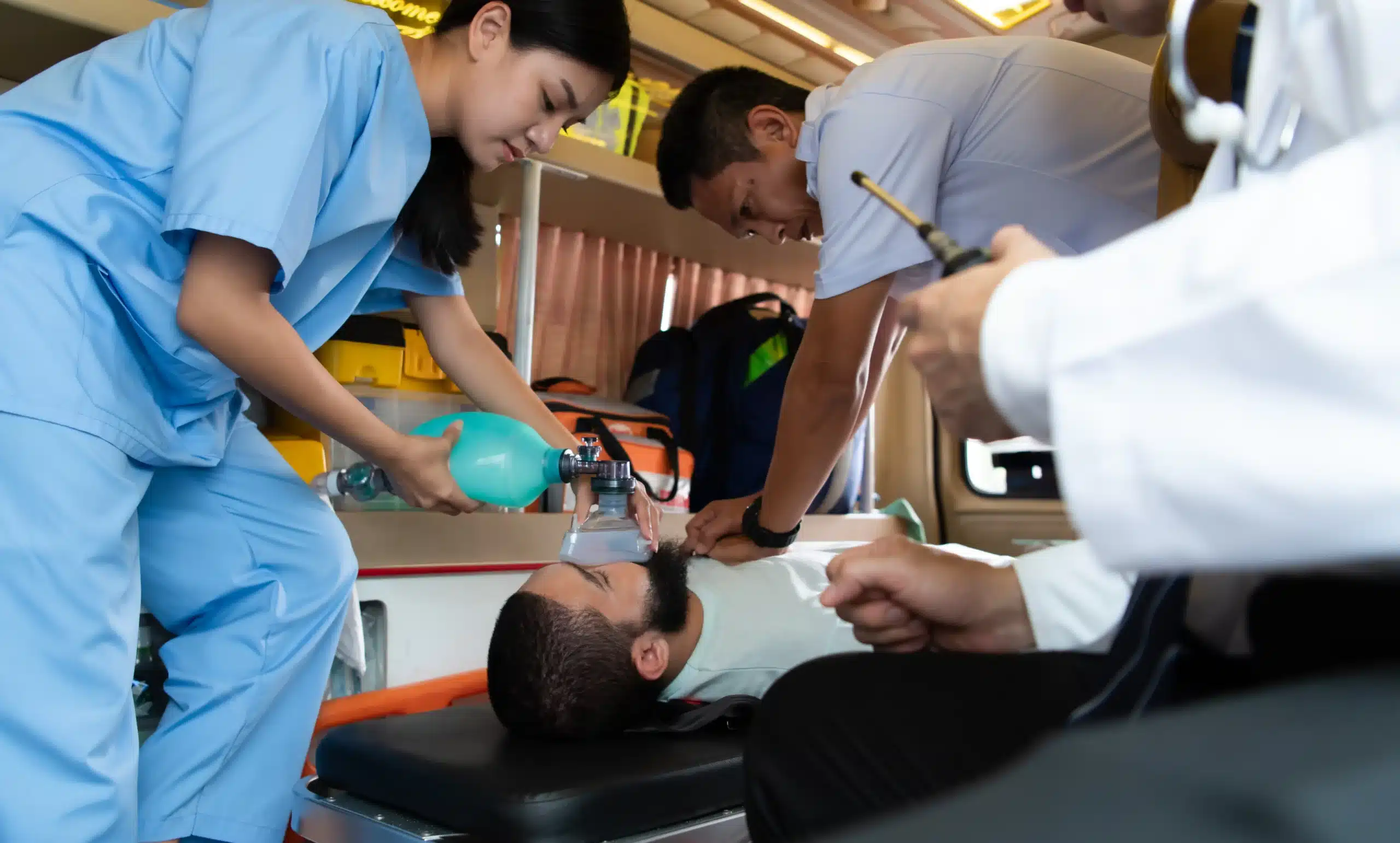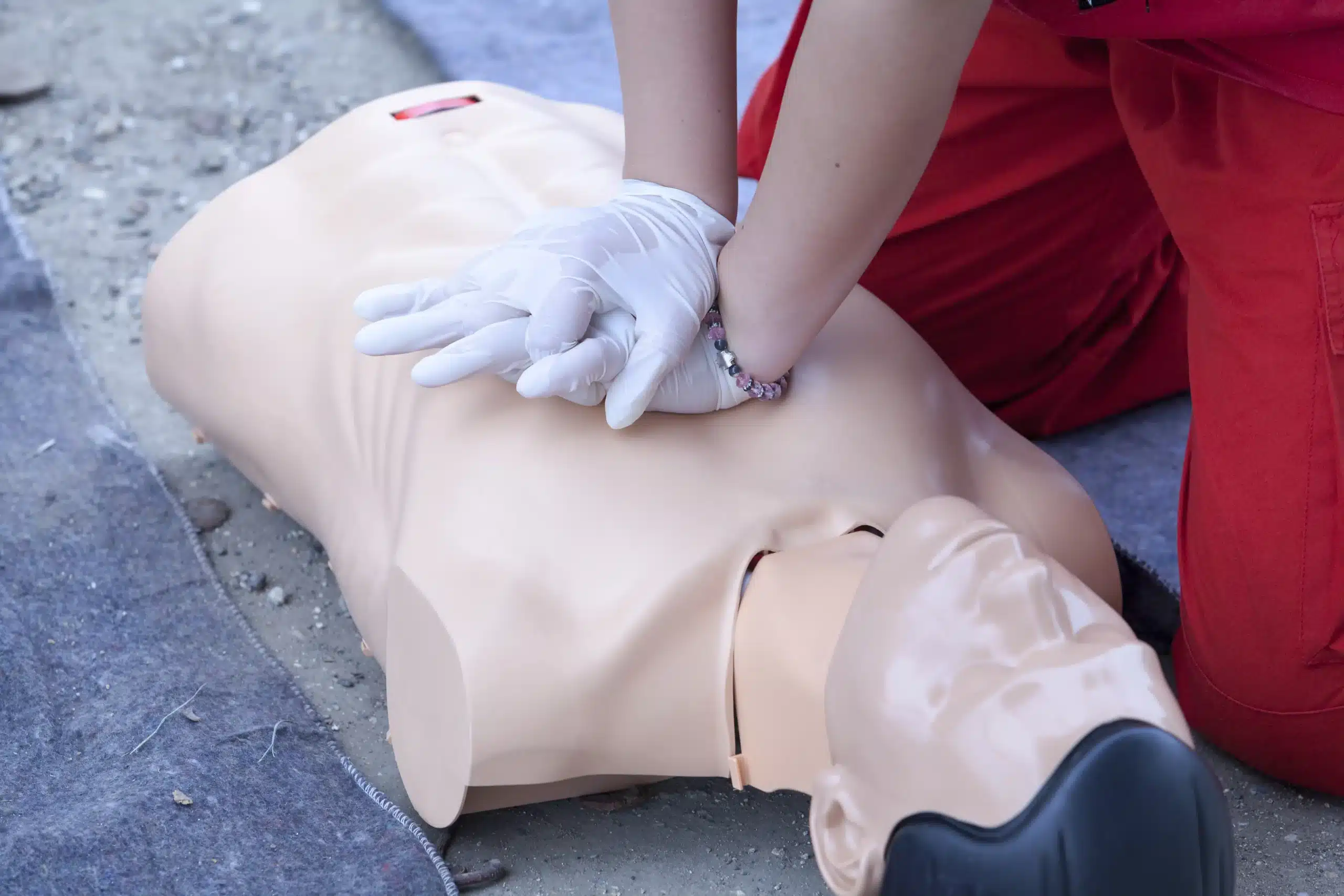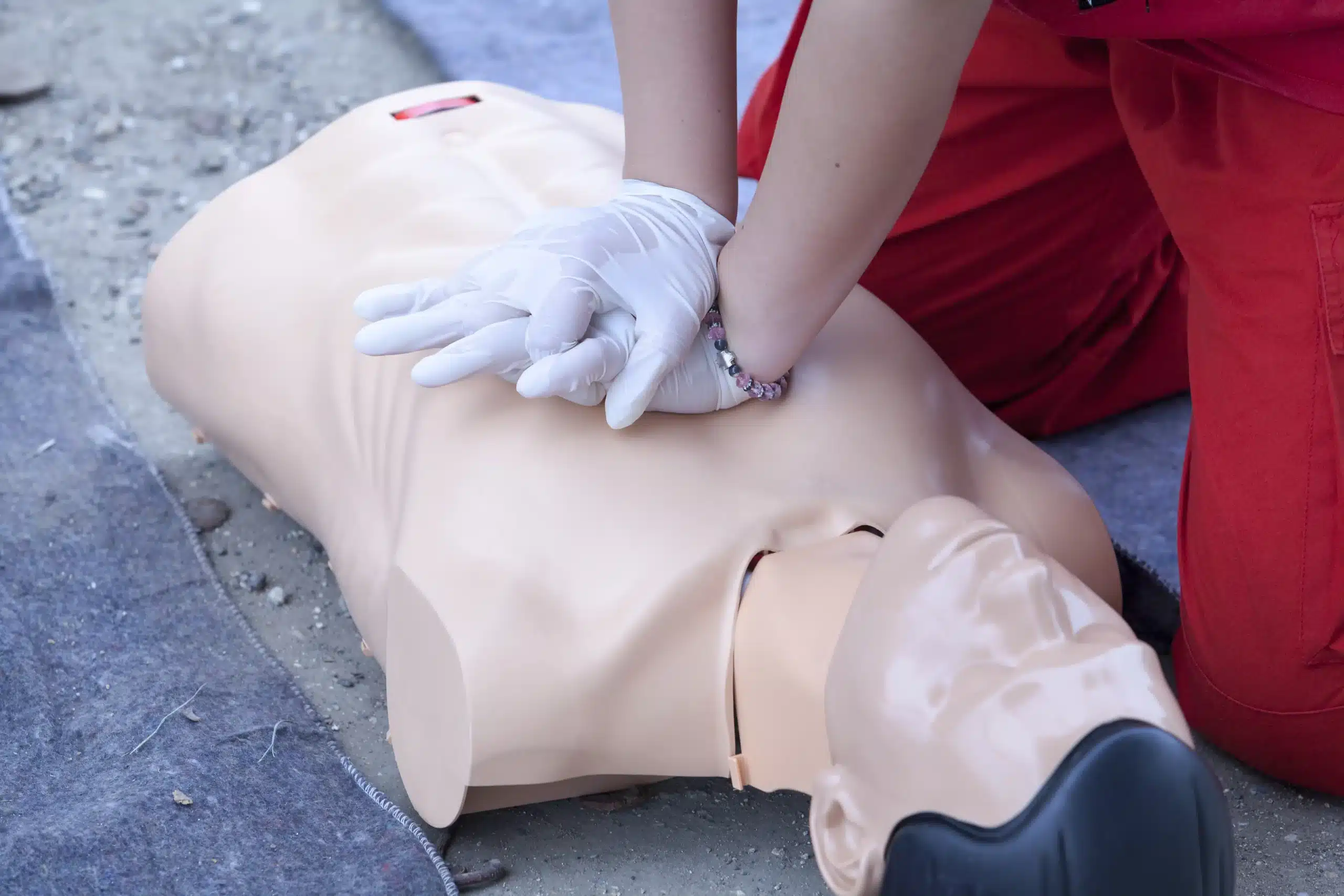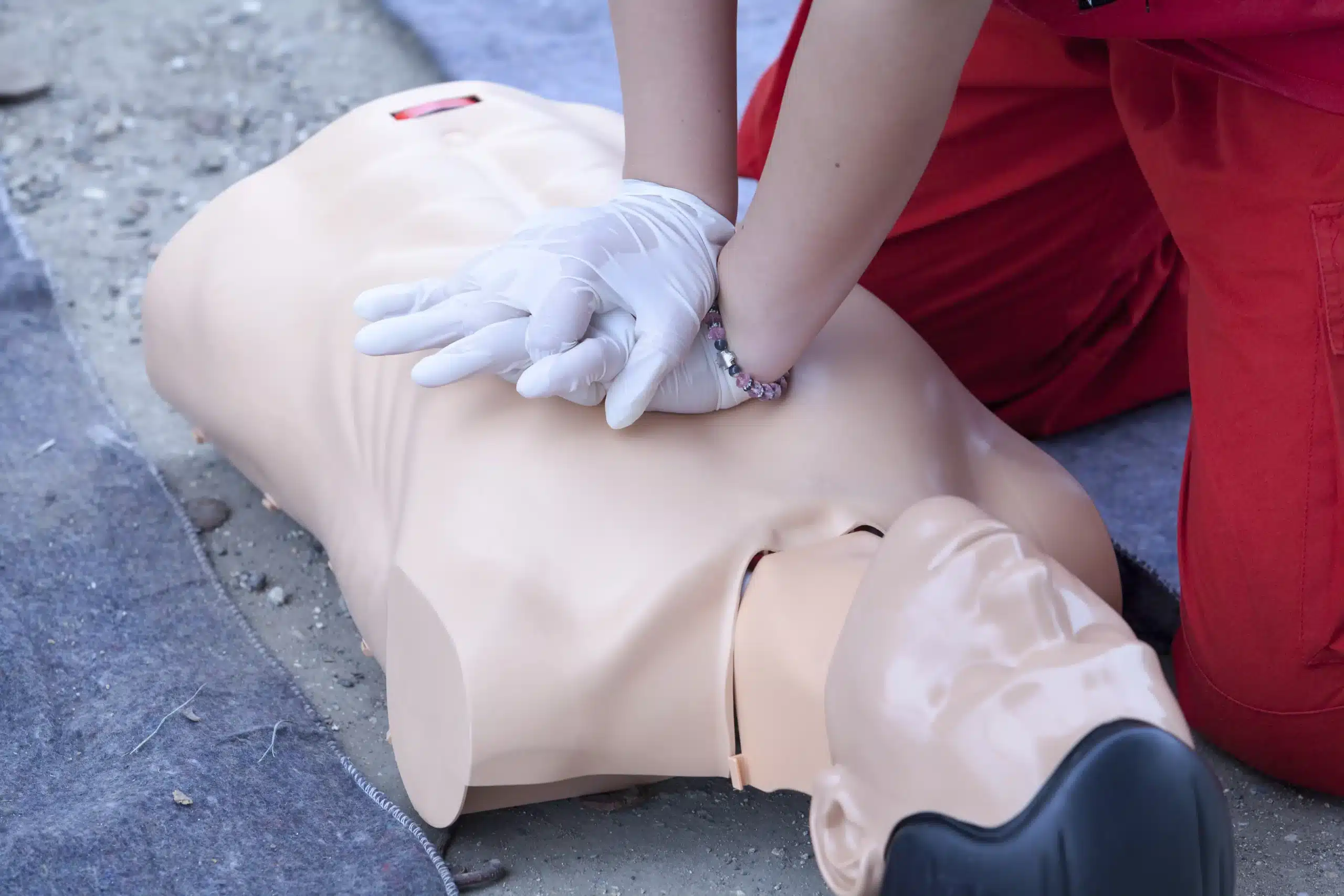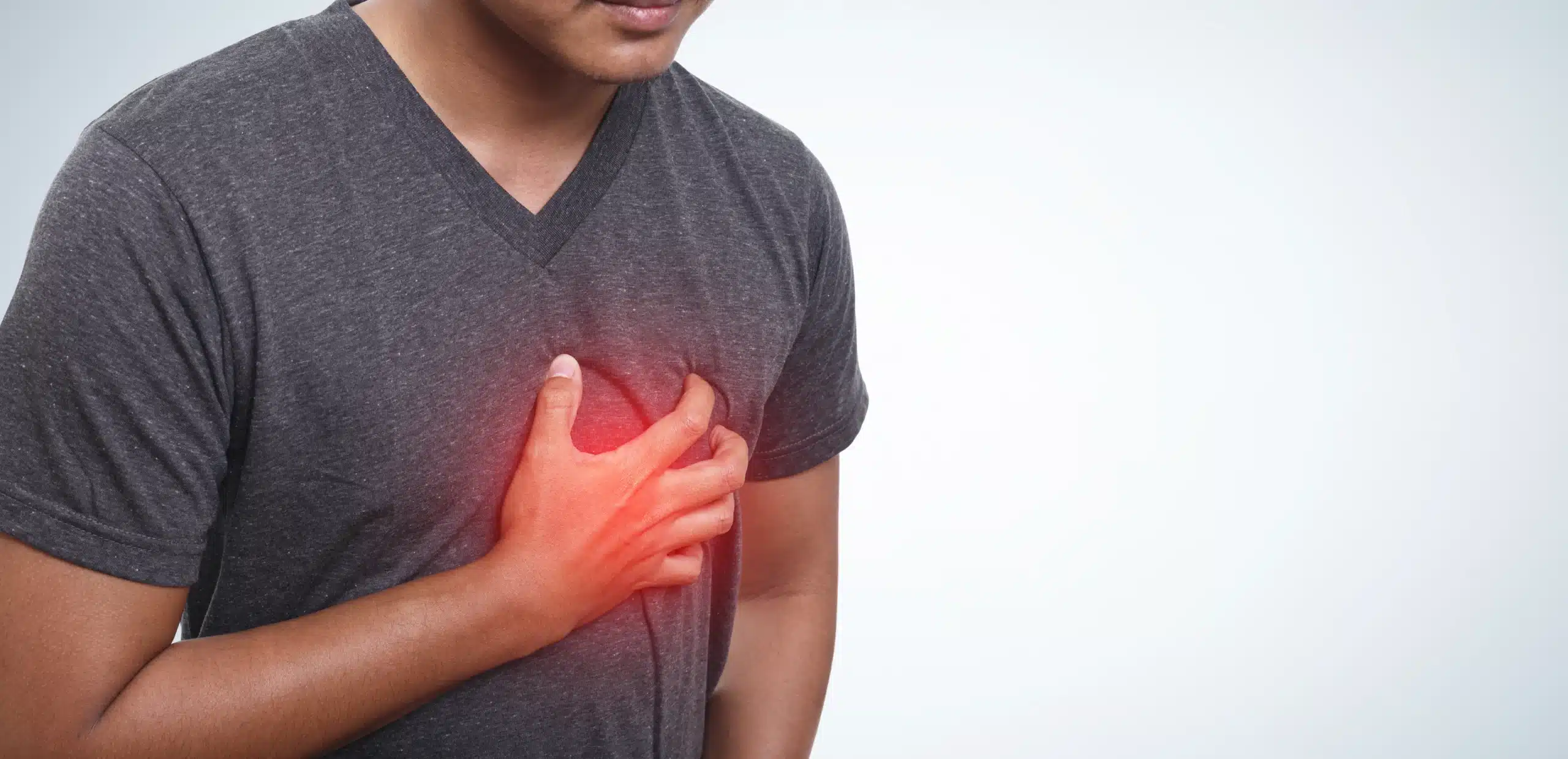Living in Folsom, we’re lucky to have so much natural beauty right at our doorstep, from Folsom Lake to miles of hiking trails. But with all that outdoor adventure comes the occasional bump, scrape, or unexpected incident. That’s why having a well-stocked first-aid kit is so important for Folsom residents. It’s not just about bandages and antiseptic wipes; it’s about having the right tools and knowledge to handle any situation, big or small. This guide will walk you through everything you need to know about building, maintaining, and using first-aid kits for Folsom residents, ensuring you’re prepared for anything life throws your way. We’ll cover essential supplies, customizing your kit for Folsom’s unique environment, and local resources for first-aid training.
Key Takeaways
- Preparedness is key: A well-stocked first-aid kit, tailored to your family’s needs and Folsom’s environment, empowers you to handle emergencies effectively. Regular checks and updates are crucial.
- Knowledge is power: First-aid training complements your kit, giving you the confidence to respond effectively to various situations. Explore local classes and online resources to build your skills.
- Customization matters: Consider your lifestyle, activities, and any specific medical needs when choosing a kit. A personalized approach ensures you have the right supplies for any situation.
What Makes a Good First-Aid Kit?
A good first-aid kit is more than just a box of bandages; it’s your first line of defense in emergencies. It should be comprehensive, organized, and readily accessible, empowering you to handle minor injuries and stabilize serious situations until professional help arrives. Think of it as a personalized safety net, tailored to your family’s specific needs and the activities you enjoy around Folsom. Whether it’s a scraped knee on the bike trail or a more serious incident while hiking, a well-stocked kit can make all the difference. We’ll cover the essentials, but remember, a first-aid kit is a dynamic tool. Regularly checking and updating its contents ensures you’re always prepared.
Common First-Aid Kit Misconceptions
When it comes to first aid, misinformation can be as dangerous as an open wound. Let’s clear up some common misconceptions that Folsom residents should be aware of:
-
Myth: Butter or oil helps burns heal. Slathering butter or oil on a burn might sound like an old-fashioned remedy, but it actually worsens the injury. These substances trap heat, leading to deeper damage. Instead, cool the burn under cool running water and cover it with a sterile dressing. For more information on treating burns, check out the Mayo Clinic’s guide on burn care.
-
Myth: Tourniquets should be used for all bleeding. Tourniquets are life-saving tools in extreme cases of severe bleeding, but they’re not a one-size-fits-all solution. Applying a tourniquet incorrectly or unnecessarily can restrict blood flow to healthy tissues and cause serious complications. Direct pressure is usually the best first step for controlling bleeding. The American Red Cross offers resources on how to control bleeding properly.
-
Myth: Home remedies are always safe. While some home remedies can be helpful, others are based on outdated information and can do more harm than good. Using vinegar on insect bites or applying ice directly to a burn can irritate the skin and delay healing. Stick to evidence-based first-aid practices for the best results. The Mayo Clinic offers a comprehensive guide to basic first-aid practices.
-
Myth: First aid is only for serious injuries. First aid isn’t just for major emergencies; it plays a vital role in treating minor injuries too. Cleaning and dressing a small cut properly can prevent infection and promote faster healing. A well-stocked first-aid kit empowers you to handle everyday mishaps and prevent them from becoming bigger problems. MedlinePlus provides helpful tips for handling everyday first-aid situations.
By understanding these common first-aid misconceptions, you can approach emergencies with confidence and provide effective care for yourself and your loved ones in Folsom.
Essential Items for Your Folsom First-Aid Kit
A well-stocked first-aid kit is your first line of defense against minor injuries and emergencies, providing immediate relief and helping prevent complications until professional medical help arrives. Let’s explore the essentials for your Folsom first-aid kit.
Basic Supplies and Medications
Start with the basics: antiseptic wipes to clean wounds, antibacterial ointment to prevent infection, various sizes of adhesive bandages (fabric ones are best!), butterfly bandages for closing small cuts, gauze pads, nonstick sterile pads for larger wounds, and medical adhesive tape to secure dressings. Don’t forget tweezers for splinters and scissors for cutting bandages or clothing. Pain relievers like ibuprofen or acetaminophen are also helpful.
Emergency Tools and Location-Specific Items
Beyond the basics, consider items specific to Folsom and potential emergencies. Our outdoor environment means your kit should include supplies for insect bites, sprains, and heat exhaustion. A cold pack can soothe sprains and bumps, while insect repellent can prevent bites. If you’re spending time near water, consider a CPR mask or rescue whistle. A small flashlight is also invaluable, especially during power outages or nighttime emergencies.
Customizing for Folsom’s Climate and Activities
Folsom’s hot, dry summers and active lifestyle require customization. Pack extra sunscreen, lip balm with SPF, and electrolyte tablets to prevent dehydration during outdoor activities. If you have allergies, ensure your kit includes any necessary medications, like an epinephrine auto-injector (EpiPen). Include a small card with emergency contact information and any relevant medical conditions. Regularly check your kit and replace expired items to ensure it’s always ready when you need it. A first-aid kit tailored to Folsom and your personal needs will help you stay safe and prepared.
Types of First-Aid Kits
Not all first-aid kits are created equal. Different situations call for different supplies. Let’s break down the main types of first-aid kits you should consider:
Home First-Aid Kits
A well-stocked first-aid kit is essential for any home. Think of it as your first line of defense against minor injuries and illnesses. Keep your home kit in an easily accessible spot, like under the bathroom sink or in a kitchen cabinet. Make sure everyone in the family knows where it is. Your home first-aid kit should include the basics like bandages, antiseptic wipes, pain relievers, and a first-aid manual. The American Red Cross offers helpful resources for creating a comprehensive home first-aid kit.
Travel and Outdoor First-Aid Kits
Whether you’re camping in Folsom Lake State Recreation Area or backpacking through the Sierra Nevada, a travel or outdoor first-aid kit needs to handle more than just everyday bumps and scrapes. Consider potential outdoor injuries like insect bites, sprains, blisters, and heat exhaustion. Pack essentials like insect repellent, sunscreen, a whistle, a compass, and extra water purification tablets. Websites like Cool of the Wild offer valuable guidance on essential items for outdoor adventures.
Workplace First-Aid Kits
Every workplace should have a readily available first-aid kit. OSHA has specific requirements for workplace first-aid, so check their guidelines to ensure your kit meets the standards. A workplace kit should contain supplies to handle common workplace injuries, such as cuts, burns, and eye injuries. Regularly check and restock your workplace kit to ensure it’s always prepared for an emergency. Consider consulting resources like Cavanna Fire for advice on avoiding common mistakes with workplace first-aid kits.
Where to Buy First-Aid Kits in Folsom
Finding the right first-aid kit is easy, thanks to a variety of options both locally in Folsom and online. Whether you prefer browsing in person or the convenience of online shopping, you’ll find a kit to suit your needs and budget.
Local Stores and Pharmacies
If you like to examine a first-aid kit before buying it, several Folsom stores have a good selection. The Home Depot offers a wide variety, with many kits available for in-store pickup or free shipping on qualifying orders. You can browse their first-aid products online to see what they have in stock. Local pharmacies like CVS and Walgreens also carry basic first-aid kits suitable for minor injuries and everyday use.
Online Retailers
Online shopping opens up a huge selection of first-aid kits, often with competitive pricing. The Rescue Training Institute offers a range of kits, from basic to comprehensive, with prices to fit any budget. The American Red Cross online store is another reliable source for various kits and supplies. You can also find a wide variety on Amazon and other major online retailers, making it simple to compare prices and features.
Specialty Shops
For specific needs, consider looking at specialty shops. Go Aid Kit offers kits designed for outdoor adventures, addressing injuries like insect bites and sprains. MFASCO Health & Safety also provides helpful information on outdoor first-aid kits to keep families safe during outdoor activities. These specialized kits are a great choice for Folsom residents who enjoy hiking, biking, and other outdoor recreation in the area.
Comparing First-Aid Kit Brands and Prices
Picking the right first-aid kit means balancing your budget with your needs. Luckily, there’s a wide range of options available, from basic to comprehensive. Let’s break down some choices to help you find the perfect fit.
Budget-Friendly Options
If you’re looking for an affordable way to cover the essentials, plenty of budget-friendly first-aid kits exist. These are great for minor injuries like scrapes and small cuts. You can find pre-assembled kits at most drugstores or big box retailers for around $20. The Rescue Training Institute also offers a variety of kits at different price points if you want more specialized options. Just keep in mind that these kits might not have everything you need for more serious situations.
Mid-Range Kits
Mid-range first-aid kits offer a step up in terms of supplies and preparedness. These kits often include items like tourniquets and hemostatic gauze, which can be crucial in emergencies. Expect to spend around $30-$45 for essential trauma items like a C-A-T Tourniquet. Building your own mid-range kit can be a good option if you want to choose specific supplies.
Premium First-Aid Kits
For the most comprehensive coverage, consider a premium first-aid kit. These kits are designed to handle a wide range of situations, from everyday injuries to more serious trauma. Many premium kits are OSHA compliant, meaning they meet Occupational Safety and Health Administration standards for workplace safety. Learn more about OSHA compliant kits and what they include. While these kits are an investment, they offer peace of mind knowing you’re prepared for almost anything.
Top Brands for Folsom Residents
Several reputable brands offer reliable first-aid kits. Here are a few to consider:
American Red Cross
The American Red Cross offers a variety of first-aid kits tailored to different needs, from home and workplace to travel and car emergencies. Their kits are well-organized and easy to use.
Johnson & Johnson
Johnson & Johnson provides a wide range of individual first-aid products, making it easy to restock your kit or create a custom one. They’re a trusted name in healthcare, so you can rely on the quality of their bandages, antiseptics, and other essentials.
First Aid Only
First Aid Only specializes in first-aid kits for various settings, including homes, workplaces, and travel. They offer different sizes and configurations to suit your specific requirements.
Be Smart Get Prepared
Be Smart Get Prepared is known for its comprehensive kits, often geared towards families and outdoor enthusiasts. Their kits often include extra supplies for common outdoor injuries.
Adventure Medical Kits
If you’re an outdoor adventurer, Adventure Medical Kits is a great choice. They specialize in kits designed for wilderness activities, with supplies for things like insect bites, sprains, and blisters.
Maintain and Update Your First-Aid Kit
Having a well-stocked first-aid kit is essential, but it’s not a one-and-done task. Regular maintenance ensures your kit remains effective and ready for any situation. Here’s how to keep your
Regular Inventory Checks
Life gets busy, and it’s easy to forget what’s inside your first-aid kit. Make it a habit to perform regular inventory checks. The American Red Cross recommends having a first-aid kit at home and in your car, so you’re prepared wherever you go. Every few months, open your kit and take stock of its contents. Are you running low on bandages? Have the antiseptic wipes dried out? Making a quick list of needed replacements will save you time and stress during an emergency.
Replacing Expired Items
Medications and certain supplies have expiration dates. Using expired items can be ineffective or even harmful. During your inventory checks, pay close attention to these dates. Expired medications should be safely discarded and replaced. Also, check the dates on items like antiseptic wipes, ointments, and sunscreen.
Seasonal Updates
Your first-aid kit needs may change with the seasons. In the summer, you might need extra sunscreen, insect repellent, and products for heat-related issues. During allergy season, keep antihistamines on hand. If you’re planning outdoor adventures, consider adding blister treatment, pain relievers, and a cold pack. Thinking ahead and adapting your kit to the season will ensure you’re prepared for anything.
Customize Your Kit for Folsom
While a standard first-aid kit covers common injuries, Folsom’s unique environment and your lifestyle require some customization. Think about where you spend your time and the activities you enjoy, and tailor your kit accordingly.
Addressing Local Environmental Factors
Folsom’s hot, dry summers mean your kit should include items like sunscreen, insect repellent, and a cooling towel. If you’re hiking or biking on Folsom Lake’s trails, consider adding blister treatment and extra water bottles. During allergy season, pack antihistamines and eye drops. Remember, outdoor environments like Folsom Lake necessitate a specialized approach to first aid, addressing potential injuries like insect bites, sprains, or heat exhaustion.
Personal Medications and Emergency Contacts
Don’t forget personal medications like an EpiPen for allergies or an inhaler for asthma. Keep these up-to-date and clearly labeled. Include a list of emergency contacts, allergies, and medical conditions in a waterproof bag inside your kit. Common mistakes include forgetting essential medications and overlooking personal needs such as allergy treatments, so double-check your kit regularly.
Tailoring for Specific Outdoor Activities
If you’re an avid cyclist, add extra bandages and antiseptic wipes for road rash. For water sports on the lake, include a whistle and a small mirror for signaling. A well-stocked outdoor first-aid kit should include basic care supplies like antiseptic wipes, antibacterial ointment, assorted adhesive bandages, butterfly bandages, gauze pads, nonstick sterile pads, and medical adhesive tape. Whether you enjoy being active in nature or have many favorite outdoor activities, outdoor first-aid kits are a perfect way to ensure you and your family can have fun while staying safe. Remember, the type of outdoor first-aid kit you need depends on your activity.
First-Aid Training and Resources in Folsom
Knowing how to use your first-aid kit is just as important as having one. Luckily, Folsom has excellent resources for first-aid and CPR training, ensuring you’re prepared for emergencies.
Local CPR and First-Aid Classes
Folsom offers a variety of training options for residents looking to get certified. From basic first aid and CPR to advanced certifications like ACLS and PALS, local providers offer courses for all skill levels. These certifications are crucial for healthcare providers, and the American Heart Association (AHA) also emphasizes community preparedness by offering courses like CPR and First Aid. This focus on community training empowers residents to confidently respond to emergencies and provide immediate assistance when needed.
Online Resources
Beyond in-person classes, many online resources can help you learn basic first-aid techniques and refresh your knowledge. The American Red Cross website, for example, offers valuable information on building and maintaining your first-aid kit, along with guides for handling common injuries. These resources are convenient for learning at your own pace and staying up-to-date on best practices.
Folsom CPR Classes Offerings
For those seeking comprehensive training, Folsom CPR Classes provides a range of AHA-certified courses, including CPR, BLS, ACLS, PALS, and First Aid. They offer daily classes in Folsom and surrounding areas, making it easy to find a time that works for you. Their offerings extend beyond basic first aid and CPR, covering specialized certifications like BLS, ACLS, and PALS, catering to healthcare professionals and anyone wanting advanced training. For more information, check out their BLS, ACLS, and PALS pages. They also offer programs like RQI and discount group classes.
Choose the Right First-Aid Kit
Picking the right first-aid kit takes a little planning, but it’s worth it. A well-stocked kit means you can handle minor injuries and emergencies effectively until professional help arrives. Here’s how to find the perfect fit for your Folsom family:
Assess Your Family’s Needs
Think about your family’s daily routines and any specific medical needs. Do you have young children prone to scrapes and bumps? Does anyone have allergies or require specific medications? Understanding your family’s health profile helps you choose a kit with the right supplies. A comprehensive first-aid kit ensures you can respond promptly to injuries, reducing the risk of complications and providing immediate relief.
Consider Portability and Storage
Where will you keep your first-aid kit? A bulky kit might be fine for your home, but you’ll need something compact for your car or backpack. If you enjoy Folsom’s many outdoor spaces, consider a specialized kit designed for hikers, bikers, or campers. Outdoor-specific kits should address potential injuries like insect bites, sprains, or heat exhaustion. Easy access is key—you want to find what you need quickly in an emergency.
Balance Cost and Quality
First-aid kits come in a wide price range. While you don’t need to break the bank, remember that quality matters. Check expiration dates on medications and the durability of supplies. Avoid overpacking with unnecessary items, which can make the kit bulky and difficult to manage. Focus on essential supplies and consider gradually adding specialized items as needed. A good balance between cost and quality ensures you have reliable supplies when you need them most.
Related Articles
- First-Aid Classes Near Me: Your Certification Guide – Folsom CPR Classes
- First-Aid Training in Citrus Heights: A Complete Guide – Folsom CPR Classes
- First-Aid Courses in Folsom: Your Complete Guide – Folsom CPR Classes
- Busting CPR Myths and Saving Lives – Folsom CPR Classes
- Pediatric CPR & First Aid in Sacramento: Your Guide – Folsom CPR Classes
Frequently Asked Questions
What’s the biggest mistake people make with their first-aid kits? The most common mistake is simply not having one readily available. Many people underestimate the importance of a well-stocked kit until they need it. Beyond that, neglecting to check and update the contents regularly leads to expired medications and missing supplies when they’re most crucial.
I’m on a budget. Do I really need a fancy first-aid kit? Not at all! A basic, affordable kit is better than nothing. Start with essential supplies like bandages, antiseptic wipes, and pain relievers. You can always add more specialized items later as your budget allows. The key is to have something readily available for those everyday mishaps.
Are online first-aid kits as good as the ones I can buy in a store? Absolutely. Online retailers often offer a wider selection and competitive pricing. Just be sure to buy from reputable sources like the American Red Cross or established medical supply companies. Read reviews and check the contents list to ensure the kit meets your needs.
How often should I check and update my first-aid kit? Aim to check your kit every six months. This allows you to replace expired medications, restock depleted items, and adjust the contents based on the season or upcoming activities. Setting a reminder on your phone or calendar can help you stay on track.
What kind of training do I need to use a first-aid kit effectively? While a formal first-aid course is always recommended, even basic knowledge can make a difference. Familiarize yourself with the contents of your kit and learn basic first-aid techniques for common injuries like cuts, burns, and sprains. Numerous online resources and local classes are available to help you gain confidence and skills.
